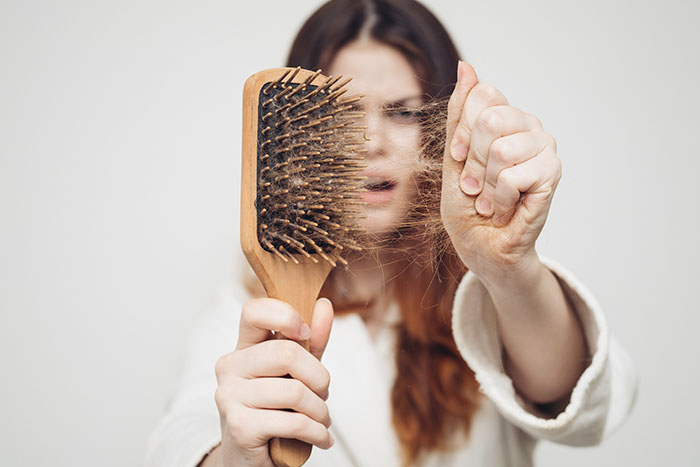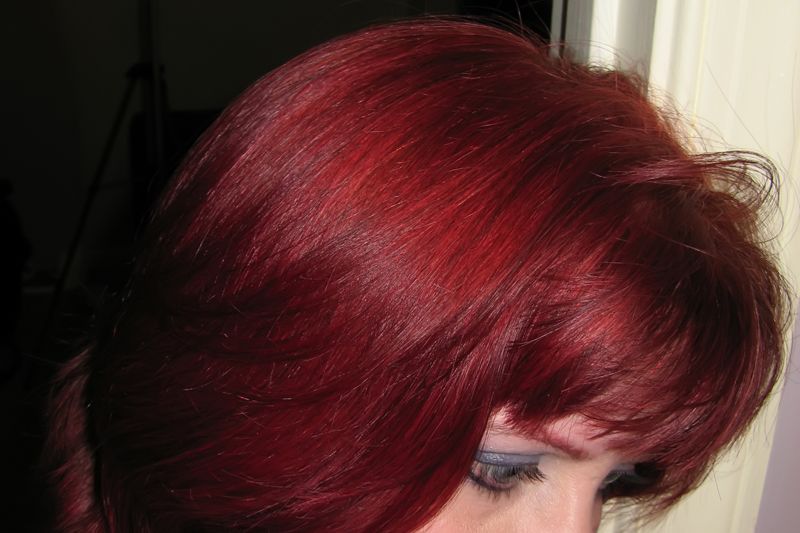Table Of Content

Ingesting large amounts of warfarin, an ingredient in rat poison, can also lead to hair loss. Taking toxic amounts of vitamin A and selenium can also lead to hair loss. Hair loss during pregnancy is not common, but it is possible. During pregnancy, people are more likely to have conditions that cause hair loss, like hyperthyroidism, hypothyroidism, and iron-deficiency anemia. Treating these conditions can help hair thickness return.
Former Executive Editor, Harvard Women's Health Watch
There are things you can try if your hair loss is causing you distress. But most treatments are not available on the NHS, so you'll have to pay for them. If you are taking a new medication and notice your hair is falling out or thinning, reach out to your healthcare provider. Someone poisoned with arsenic, thallium, mercury, boric acid, and lithium can lose hair as a side effect.

Hair Loss in Women
Your follicles depend on a variety of vitamins and minerals. If you’re not getting the right nutrients, you may notice hair loss. A doctor can run tests to find out if you’re getting enough. They might want you to eat more protein and foods with vitamin D.
The Connection Between Celiac Disease and Hair Loss - Verywell Health
The Connection Between Celiac Disease and Hair Loss.
Posted: Fri, 15 Sep 2023 07:00:00 GMT [source]
Health Alerts from Harvard Medical School
More research is needed to know if vitamin and mineral supplements can help. STIs like syphilis can cause you to lose hair in patches on the scalp, eyebrows, and face. Treating syphilis with antibiotics should stop any additional hair loss. In males, hair starts thinning near the top of the head and forms a receding hairline (creating an "M" shape).
Male and female pattern baldness are the main cause of hair loss. However, lifestyle factors, such as frequent tight hairstyles, and medical conditions, such as alopecia, can also cause hair loss. Strangely, while men may experience hair loss on their head, at the same time, they may also develop more hair in other areas like their ears, face, chest or back. This is because the receptors that bind to androgens are different in different areas of your body.
What does normal hair growth look like?
Masculinizing hormone therapy (taking testosterone) may cause hair loss within a year, and the effects aren't reversible if you stop hormone treatment. Pregnancy, and especially giving birth, can lead to hair loss. You're most likely to see hair loss about 3 months after giving birth. That's because your estrogen levels drop after childbirth. If you're losing hair while pregnant, ask your doctor if you might have a dietary deficiency. You can lose hair during menopause as your estrogen and progesterone levels drop.
Hair-Loss TikTok Offers Community, and Dubious Recommendations - The New York Times
Hair-Loss TikTok Offers Community, and Dubious Recommendations.
Posted: Wed, 13 Dec 2023 08:00:00 GMT [source]
Menopause and hormone imbalances
That’s a women’s health condition that affects your hormone levels. PCOS can lead to hirsutism -- when women sprout a lot of hair in places they normally wouldn’t. Extra androgens, sometimes called male hormones, cause this.
It’s also the most common cause of hair loss, affecting up to 50% of people. While it’s more prevalent in older adults, anyone can experience it, including children. Hair loss can sometimes be a sign of an underlying disease.
Reasons Women Lose Their Hair
Hair loss in men, the Harvard article explains, "usually begins above the temples," with the receding hairline forming the shape of an M. In women, thinning hair appears gradually, usually at the part line, and increasing hair loss spreading from the top of the head. Women may lose hair following childbirth or while in menopause. Women who have hormonal imbalances can have hair loss. Otherwise known as Aldactone, spironolactone works to treat hair loss by acting on hormones.
You may want to shift where hair grows (or doesn't) to reflect your affirmed gender. Stress-induced hair loss, also known as Telogen Effluvium, is a common form of hair loss. It often occurs following a traumatic or stressful event such as surgery, high fever, prolonged periods of stress, poor diet, and chronic systemic illness.
Dramatic changes in the body can cause temporary hair loss. Giving birth, rapid weight loss, surgery and certain illnesses may cause more hair loss than usual, typically in the resting phase. The search for causes and potential treatments by people experiencing hair loss is understandable. Research has tied hair loss to lower self-esteem, body image issues, and increased anxiety. The Journal of the American Academy of Dermatology recommends assessing for anxiety and stress when diagnosing hair loss. Women with hair loss due to alopecia areata may consider treatment with corticosteroids applied to the scalp or injected into multiple sites in the affected area.
Unwanted changes to your appearance can influence your self-esteem and social life. Some people find comfort in talking with a mental health professional if their hair loss causes discomfort. Others may find relief in changing their hairstyle or wearing a wig. A healthcare provider will do a thorough examination and take a detailed history to understand changes in your hair growth. Your provider will also ask about what medications or supplements you currently take.
The good news is that there are treatments that can help prevent hair loss and even stimulate new hair growth. Two preventive medications include finasteride and minoxidil. Finasteride is an oral prescription that can stop hair loss in some men. It works by blocking the enzymes that convert testosterone to dihydrotestosterone (DHT), the hormone considered the primary culprit for hair loss. Once you stop taking finasteride, your hair loss will return. Chemotherapy, certain other drugs and radiation treatments can prompt hair loss, mainly in the growth phase.
For most people, the lost hair grows back, and you maintain a full head of hair. But illness, hormonal changes, stress, aging and inherited conditions can interfere with your hair’s growth cycle. More hair falls out, but new strands don’t always grow back. Many people think that hair loss only affects people assigned male at birth (AMAB).
Another FDA-approved laser product is the Theradome LH80 PRO® helmet and low-light laser helmets and caps. Telogen effluvium is common, seen more frequently in women, and usually happens two to three months after a triggering event. It typically doesn't last more than six months, but if it does, it's considered chronic.











